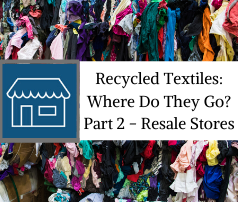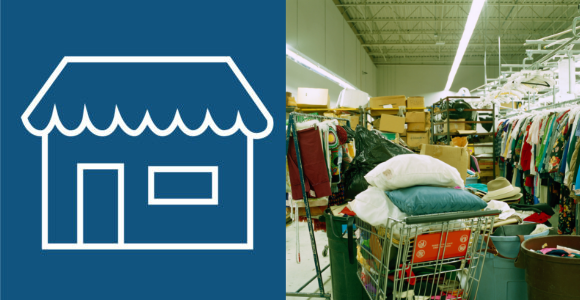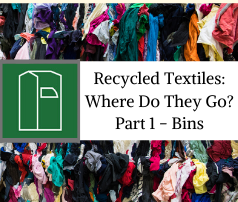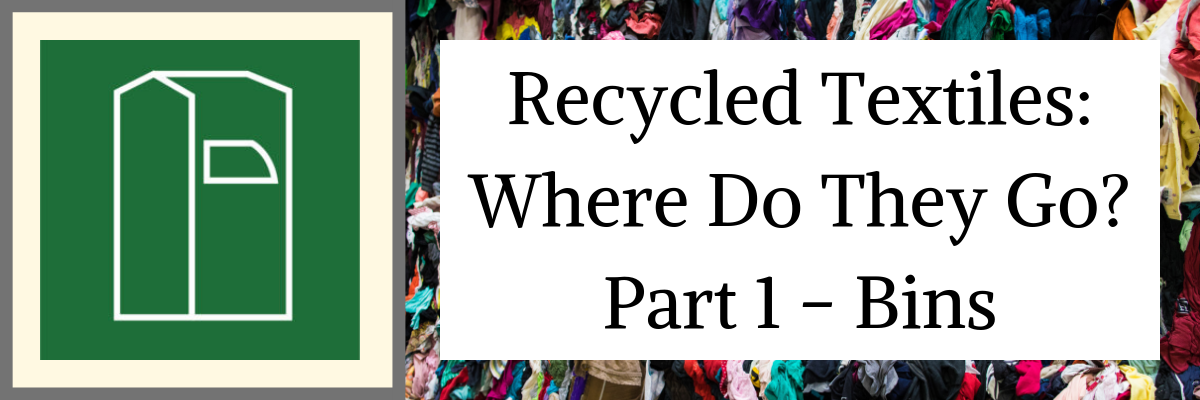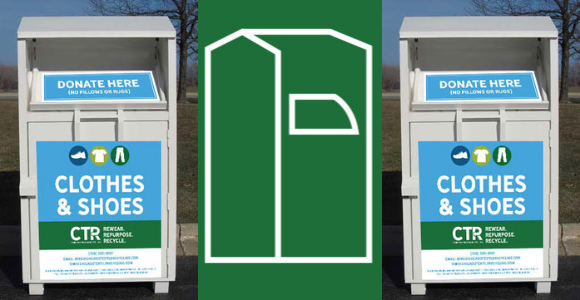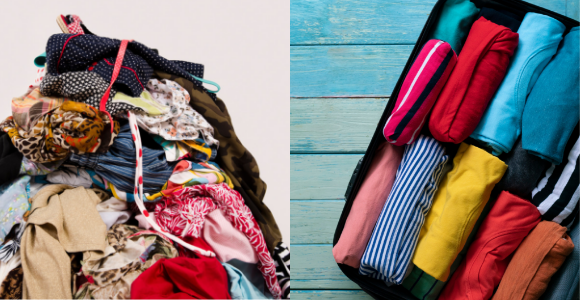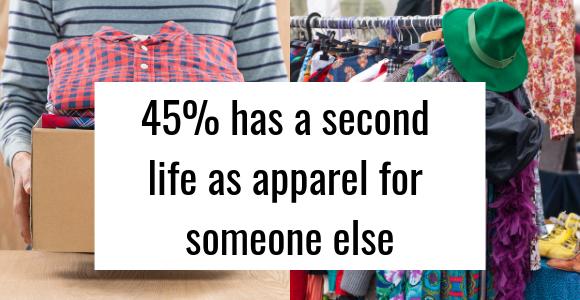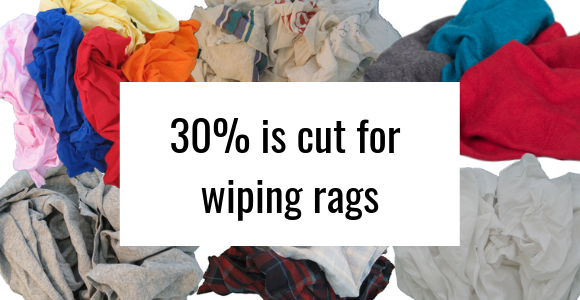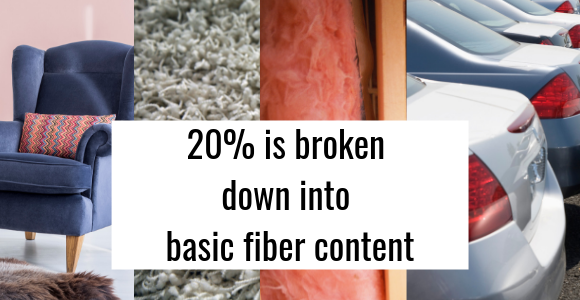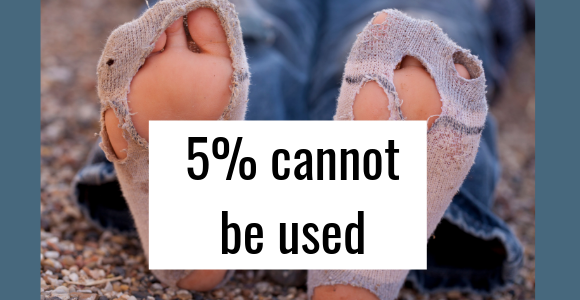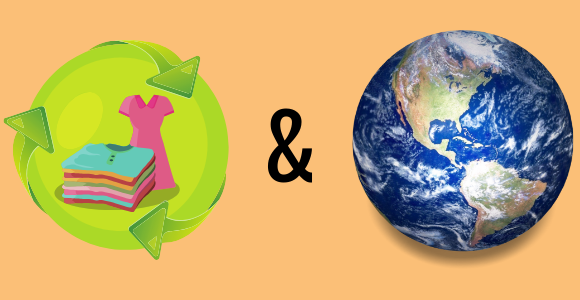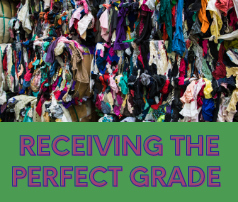 Our Company
Our Company
Receiving the Perfect Grade

Previously in our blogs at Chicago Textile Recycling, we have explained the process of what happens to your textiles once they are donated. The processes are quite similar whether donating to bins or resale stores. Though there is typically only one grading company that donations are sent to in the recycling process, there are many phases of sorting that donated textiles and other donations go through before they reach their final destination.
“Grade 1” – Donation Sorting
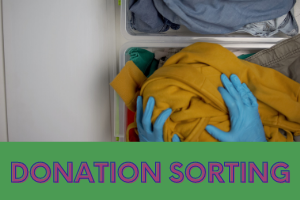
Once donations are received in bins or resale stores, the employees sift through the donations deciding the fate, or potential fate, for each item.
Upon receipt of donations, employees at resale stores quickly sort items into different groups, such as electronics, textiles, housewares, etc. Another group of employees then sort through those groups, assessing what can be resold in store versus what then goes to consolidators or recyclers. Ways to assess textiles are brand name, condition (holes, stains, etc), and knowledge of demand (what has previously sold).
Many of those items not destined to be resold in stores are sent to consolidators, which is what we are at Chicago Textile Recycling. For those who donate to our bins, our employees at CTR assess donations we receive and consolidate them, sending them to resale stores in the U.S. or graders or to secondhand vendors overseas. Those unfit for resale we buy back from graders for use as rags.
Grade 2 – Grading Facilities
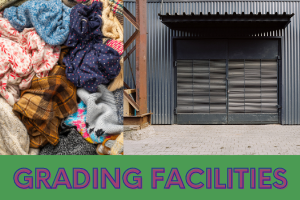
After consolidation, donations are sent to grading companies, such as Maple Textiles, the one Adam Minter visits in his book, “Secondhand: Travels in the New Global Garage Sale.” Grading companies, such as those in the town of Mississauga, sort, price and ship “as much as one third of the used clothing generated in Canada and the United States. It’s one of the world’s biggest hubs for the purchase and sale of used clothing.” (Minter, p. 132)
After describing the inside appearance of Maple Textiles, Minter goes on to explain the process:
“The clothes are pulled and graded into smaller– and finer– categories. ‘First we sort into boxes,’ Yusuf [owner] says. ‘Then our more experienced employees sort into barrels.’ [He continues, pulling a dress shirt from a box], “‘This is B-grade because of the yellow collar, and it needs to be washed. So it’ll go into a B-grade bundle and be sold for less.’ We stare into a barrel of clothes that Yusuf calls ‘number three.’ Most are torn and feel thin and cheap. ‘That’s sent for rags,’ he says. ‘Wiping rags.’”
(Minter, p139-140)
Minter goes on to say that just as clothing is sorted in local resale stores according to what customers in that area will buy, employees at grading companies are knowledgeable about what will sell overseas and grade accordingly. These items are then bundled and loaded onto shipping containers to make their way to textile vendors in Africa and other places.
The Final “Grade” – Overseas Vendors

Once a portion of donated textiles cross the ocean to their final stop before being resold to customers, they are sorted once more by those who know firsthand what will sell in their local markets. Minter traveled to Nigeria to learn more about this process from a man named Mr. A, and what happens to donated textiles once they make it to secondhand markets.
“Mr. A tells me that his biggest challenge is sorting the containers of clothes that he imports. The graders in North America and Europe do a good job, but he needs to do his own sort for his Nigerian customers.” (Minter, p 149)
This process of sorting once again for the neighborhood markets involves another warehouse with perhaps fifty employees sorting through used clothes “imported from around the world.” Mr. A tells Minter that there are “more than one hundred sorting and grading warehouses in Cotonou.” (Minter, p. 150) Noone knows what will sell better than the resident vendors that sell the textiles.
Once sorted, textiles that have made the final cut are placed out in neighborhood markets for sale. It has been quite a long process for these textiles to reach the end of their journey but a necessary one that employs hundreds of people and supports several different economies along the way.
Making the Cut
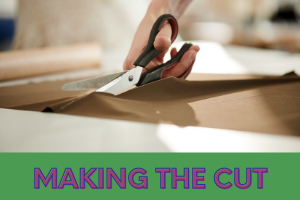
Whether resold in store, resold overseas, used in wiping rags or as fiber content, textiles have a great potential for use again and again. That is why it is so very important to recycle textiles and not throw them away. Even for those textiles with holes and stains, allow sorters and graders to make the best use of each item in pursuing the end goal of keeping textiles out of landfills.
